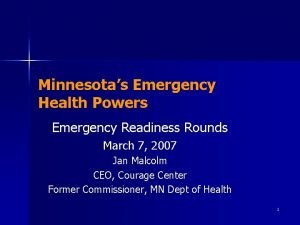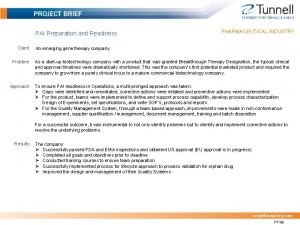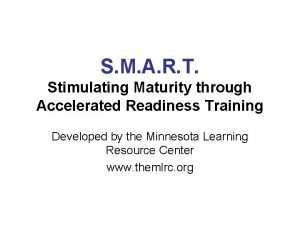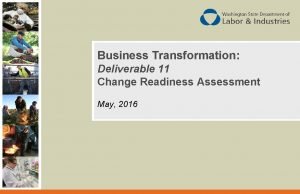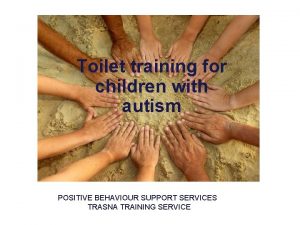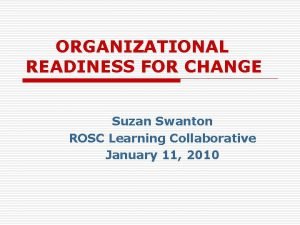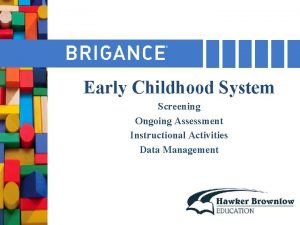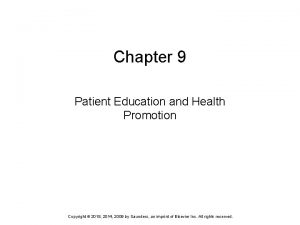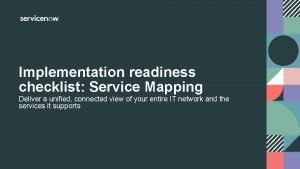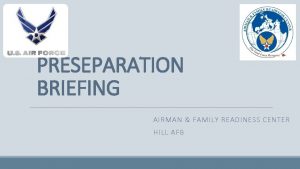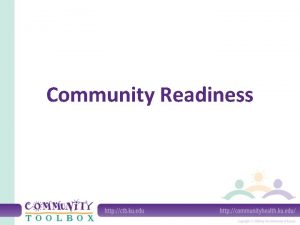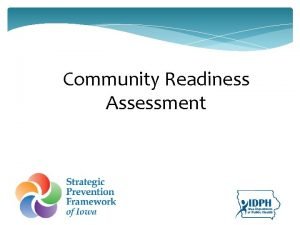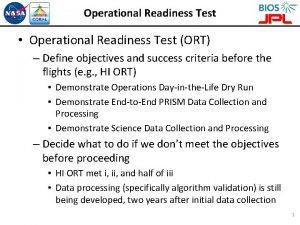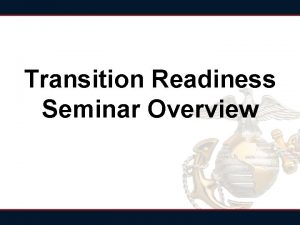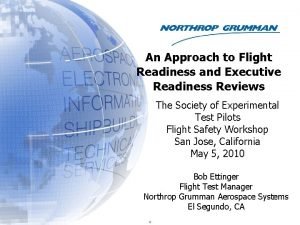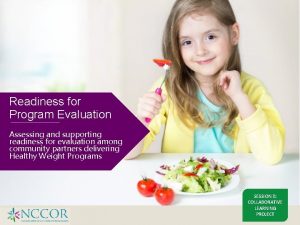Community Readiness What is community readiness Community readiness















- Slides: 15

Community Readiness

What is community readiness? Community readiness is the degree to which a community is ready to take action on an issue.

Community readiness is: Issue-specific Measurable across multiple dimensions Variable across different segments of the community • Able to be increased successfully • Is essential knowledge for addressing the issue • • •

What is the community readiness model? The community readiness model has six dimensions and nine levels.

Dimensions of community readiness: • • • Community efforts Community knowledge of the efforts Leadership Community climate Community knowledge about the issue Resources related to the issue

Levels of community readiness: • • • No awareness Denial / Resistance Vague awareness Preplanning Preparation Initiation Stabilization Confirmation / Expansion High level of community ownership

Why use the community readiness model? • It conserves valuable resources (time, money, people) by guiding the selection of strategies that are most likely to be successful • It is an efficient, inexpensive, easy-to-use tool • It promotes community recognition and ownership of the issue • Because of strong community ownership, it helps assure that strategies are culturally congruent and sustainable

Why use the community readiness model? • It encourages the use of local experts and resources instead or reliance on outside experts and resources • The process of community change can be complex and challenging, but the model breaks down the process into a series of manageable steps • It creates a community vision for healthy change

When should you use the community readiness model? • In the course of an ongoing effort • Each time you tackle a new issue • When several different communities, or different segments of the community, are involved • When you’re planning an effort that involves a participatory process • When you’ve engaged in a community or neighborhood planning effort

Who should be involved in using the community readiness model?

Who should consider using the model and/or administering the assessment? • • • Policy makers and planners Community activists Health and human service organizations Coalitions Anyone else interested in community or social change

Who should be surveyed when the model is being applied? • • • Schools/Universities Municipal/County/Tribal Government Law enforcement Health and medical professions Social services Mental health and treatment services Community at large Youth People on fixed incomes

How do you use the community readiness model?

Administering and scoring the community readiness assessment • Choose and train interviewers • Choose and train scorers • Revise the assessment tool, if necessary, to reflect the issue you’re concerned with • Select four to ten people to interview • Contact the people you have identified and see if they would be willing to discuss the issue • Conduct your interviews • Score the interviews

Using Community Readiness Information: • Initiate a participatory planning process, if possible • To move ahead, readiness on all dimensions must be at about the same level • Begin with strategies appropriate to the communities stage of readiness • Stick to it—the job’s never really done
 Prepare to scale up in community mobilization
Prepare to scale up in community mobilization Readiness rounds
Readiness rounds Hamlet soliloquys
Hamlet soliloquys Graph integration readiness checker
Graph integration readiness checker Pai readiness
Pai readiness Stimulating maturity through accelerated readiness
Stimulating maturity through accelerated readiness Business transformation readiness assessment
Business transformation readiness assessment Task analysis toileting
Task analysis toileting What motivates hamlet
What motivates hamlet Organizational readiness for change maryland
Organizational readiness for change maryland Ongoing assessment early childhood
Ongoing assessment early childhood Asd college college readiness program
Asd college college readiness program Chapter 9 patient education and health promotion
Chapter 9 patient education and health promotion Service readiness checklist
Service readiness checklist Airman family readiness center hill afb
Airman family readiness center hill afb Workplace readiness skills for the commonwealth
Workplace readiness skills for the commonwealth

